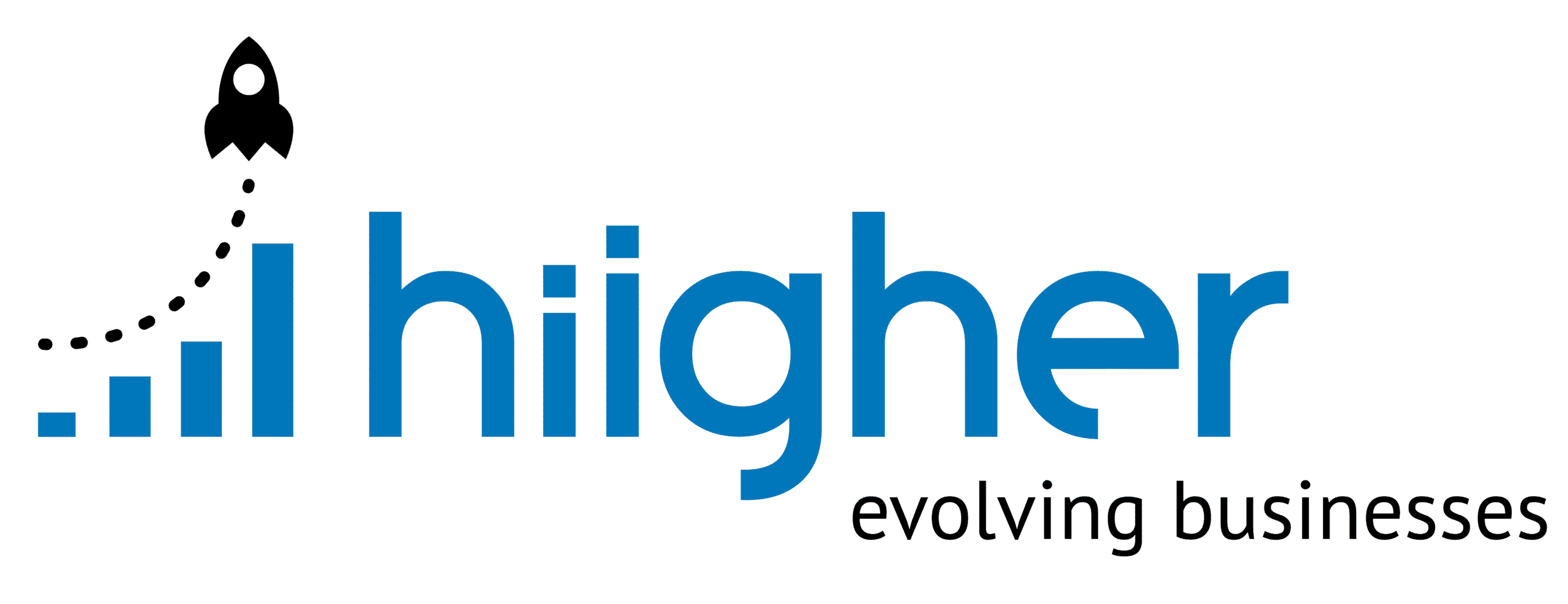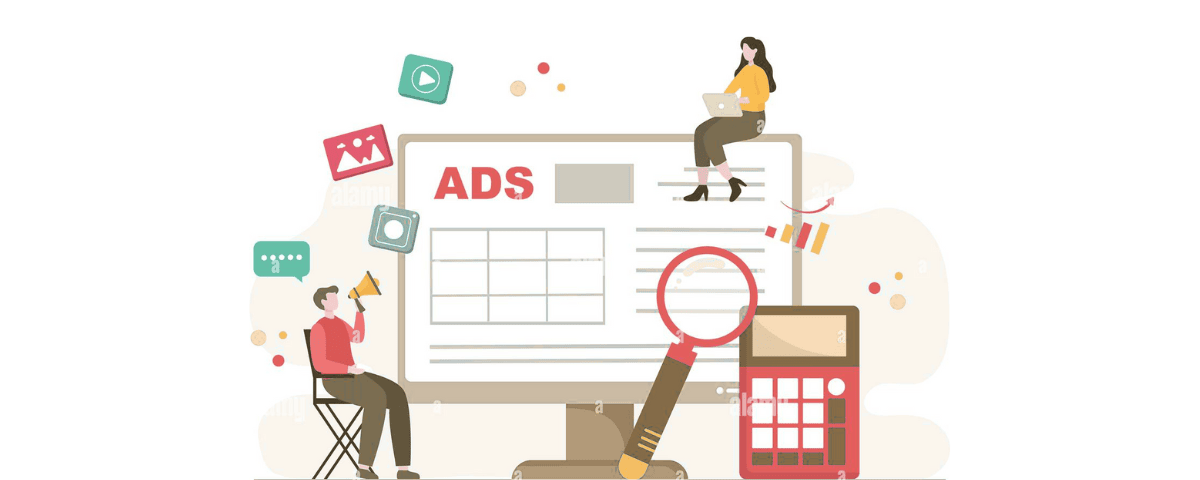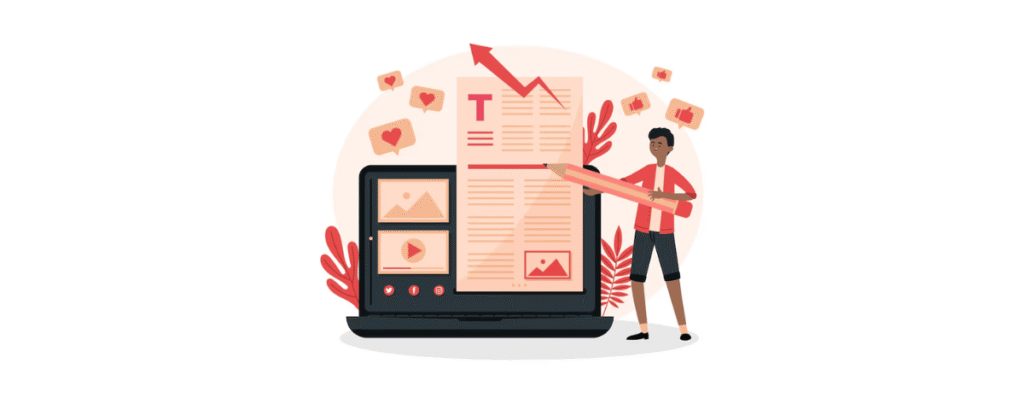- Instagram Marketing Strategy 2025: Tips, Tools & Growth - September 3, 2025
- Facebook Marketing Guide 2025: Strategies to Boost ROI - September 3, 2025
- How to Do an SEO Audit in 2025: Step-by-Step Guide - September 3, 2025
Here’s the thing most people don’t realize: organic reach has been shrinking for years. Algorithms keep tightening, and unless you’re running a viral account, your best posts will only touch a fraction of your audience. Paid social is the shortcut. It’s how you cut through the noise, show up in front of the right people, and track every click to see whether your budget is working for you.
With real-time analytics, you’re not guessing. You can log in, see how your ads are performing this very second, and adjust instantly. That’s power most traditional marketing channels can’t offer. Imagine running a TV ad and knowing within hours whether the script worked or not, that’s the reality with social ads.
Contents
- Key Takeaways Upfront
- What Exactly is Social Media Advertising?
- Social Media Marketing vs. Social Media Advertising
- ROI and Measurement – The Real Divider
- The Essential Benefits of Social Media Advertising
- Expanded Audience Reach – Your Brand, Everywhere
- Precision Targeting Capabilities
- Real-Time Performance Tracking
- Must-Know Social Media Advertising Statistics
- Core Components of a Social Media Advertising Campaign
- Setting Campaign Goals and Objectives
- Advanced Audience Targeting Techniques
- Crafting Effective Ad Creatives
- Understanding Bidding and Budgeting
- Most Popular Social Media Advertising Platforms
- Platform-by-Platform Social Media Advertising Costs
- Key Types of Social Media Ad Formats
- Strategies to Increase Social Media Ad Conversions
- Leveraging User-Generated Content (UGC)
- The Power of Remarketing
- Measuring ROI and Tracking Performance
- Common Mistakes to Avoid
- Best Practices for Effective Campaigns
- Conclusion – Turning Scrolls Into Sales
Key Takeaways Upfront
- Paid ads on platforms like Facebook, Instagram, TikTok, and LinkedIn connect you directly with highly targeted audiences.
- You only pay when people act (clicks, views, conversions), making the system cost-efficient.
- Campaigns succeed when clear objectives, precise targeting, and standout creative come together.
- Success is measured with metrics like click-through rate (CTR), cost per click (CPC), and return on ad spend (ROAS).
- Each platform has unique pricing, formats, and audiences, choosing wisely can make or break ROI.
What Exactly is Social Media Advertising?
At its simplest, social media advertising means buying placements on platforms like Facebook, Instagram, TikTok, or LinkedIn so your brand can be seen by the right people at the right time. These aren’t random billboards on the digital highway. They’re data-backed campaigns that let you target people by interests, shopping habits, demographics, and even behaviors like “added to cart but didn’t buy.”
Think of it as moving from “hope marketing” to “precision marketing.” You’re no longer shouting into the void, you’re talking directly to people who already care about what you’re offering.
And the results speak for themselves. In 2023 alone, businesses invested $207 billion globally into social ads. Why? Because the math works. With Facebook clicks averaging just $0.97 and Instagram around $3.56, marketers can scale campaigns and still keep acquisition costs under control. When the average CTR hovers near 1% across billions of users, you’re looking at massive reach plus measurable, predictable growth.
This is where Hiigher often steps in for clients. Many brands get lost chasing “vanity metrics” like likes and impressions. But what truly matters is revenue. By combining data-driven strategy with creative execution, campaigns become more than just ads, they become growth engines.
Social Media Marketing vs. Social Media Advertising
One of the biggest confusions I see with business owners is mixing up social media marketing with social media advertising. They sound similar, but they play very different roles.
- Social media marketing = the long game. Posting content, engaging with your community, building trust over time. It’s powerful, but slow.
- Social media advertising = the accelerator. Paid placements that deliver immediate visibility, clicks, and conversions.
To put it bluntly: if social media marketing is planting seeds, advertising is throwing fertilizer and sunlight on them so they grow ten times faster.
Organic vs. Paid – The Breakdown
| Factor | Organic Reach | Paid Ads |
| Cost | Free (time investment only) | Budget required |
| Speed | Slow, builds gradually | Fast, often immediate results |
| Measurability | Harder to track ROI | Clear metrics like CTR and ROAS |
| Audience | Existing followers, limited | New, broader, targeted segments |
In 2023, paid social ads drove over $207 billion in revenue. That number isn’t just a statistic, it’s proof that brands are prioritizing ad spend because it delivers where organic can’t.
ROI and Measurement – The Real Divider
Here’s the truth: what separates social media advertising from plain old posting is ROI clarity. With paid ads, you know exactly where your money went and what came back. If you spent $1,000 and brought in $5,000, that’s a 5x ROAS (return on ad spend). Many brands regularly see 10x or even 30x when campaigns are dialed in.
Compare that to organic marketing. Sure, engagement is nice, but it’s harder to connect likes and comments directly to revenue. Advertising gives you clean data and control. You can see which audience clicked, which ad creative pulled its weight, and even which call-to-action button led to purchases.
This is why many businesses now blend both approaches. Organic content builds community and brand trust, while advertising provides measurable growth and revenue. Together, they make a complete strategy.
The Essential Benefits of Social Media Advertising
So, why are brands from eCommerce startups to Fortune 500s pouring money into paid social? The benefits stack up fast:
- Reach Millions Beyond Your Followers – Paid campaigns unlock audiences you could never touch with organic alone.
- Pinpoint Targeting – Ads don’t just find people, they find the right people, based on age, location, interests, and even shopping history.
- Real-Time Tracking – No waiting months for results. You see performance unfold instantly.
- Scalable Growth – Start small, then scale your budget once you find what works.
The numbers prove it: in 2021, global social ad revenue hit $153 billion. Just two years later, that number surged to $207 billion. Social media advertising isn’t slowing down, it’s becoming the backbone of digital growth strategies.
Expanded Audience Reach – Your Brand, Everywhere
One of the most powerful aspects of social media ads is how they push your brand beyond your current circle. It’s not just about followers anymore, it’s about connecting with people who’ve never even heard of you.
Think about this: 26.8% of internet users between 16–64 discover new brands through social ads. That’s one in four people meeting businesses through a single swipe, scroll, or click.
Here’s what expanded reach looks like in practice:
- Reaching untapped markets that organic posts would never touch.
- Growing brand awareness fast by consistently showing up in feeds.
- Attracting diverse audiences across demographics, interests, and behaviors.
- Turning impressions into measurable results with clear analytics.
If you’ve ever wondered why new names keep popping up in your feed, this is why. Brands are buying visibility, and the ones doing it smartly are the ones you remember.
Precision Targeting Capabilities
Now, let’s talk about where social media advertising really flexes its muscle: targeting.
Instead of throwing ads into the void, you can zero in on people by:
- Demographics: age, gender, income, location.
- Interests: hobbies, favorite brands, lifestyle choices.
- Behaviors: shopping patterns, device use, even browsing history.
And it doesn’t stop there. Platforms like Facebook and Instagram let you build lookalike audiences, people who resemble your best customers. It’s like cloning your highest-value buyers and finding thousands more like them.
You can also run retargeting campaigns, which re-engage people who already visited your website or added items to their cart. These ads often have some of the highest conversion rates because they catch people while they’re already interested.
The results? In Q4 2023, social ads averaged a 0.98% CTR, proving that when ads are targeted with precision, they not only reach people, they engage them.
Real-Time Performance Tracking
Another standout feature is instant feedback. In traditional advertising, you might spend thousands before learning what worked. With social ads, you know right away.
You can track:
- Which ad creative is pulling in the clicks.
- Which audience is converting best.
- How much revenue each dollar of ad spend is bringing back.
Tools like Facebook Ads Manager give you this data in real time. That means you can pause underperforming ads, scale winners, and shift budgets the same day. For many businesses, this level of control is the difference between breaking even and achieving a 200% ROI.
Imagine being able to steer a campaign like a car, you can turn the wheel at any moment. That’s exactly what real-time tracking delivers.
Must-Know Social Media Advertising Statistics
If you’re still on the fence about paid social, the numbers tell a clear story.
- Global ad revenue: $207 billion in 2023 alone.
- CPC variations: Facebook averages $0.97 per click, while Instagram sits higher at $3.56.
- Click-through rates: The average CTR reached 0.98% in Q4 2023.
- Discovery power: Nearly 27% of internet users aged 16–64 said they found new brands through social ads.
Here’s the takeaway: not only are billions being invested, but these ads are working. They’re delivering real engagement, real discovery, and real revenue.
But here’s where many brands trip up: they chase metrics like “cheapest clicks” without considering quality. Hiigher has seen this firsthand with new clients. For example, a SaaS startup came to us excited about their super-low CPCs. But when we dug into the data, those clicks weren’t converting. By shifting focus from cost-per-click to cost-per-lead and lifetime value, we tripled their ROI in 60 days.
Core Components of a Social Media Advertising Campaign
Every strong campaign rests on four pillars. Skip one, and the whole thing wobbles.
- Clear Objectives
Don’t just “run ads.” Define whether you want brand awareness, sign-ups, or direct sales. Each goal demands a different strategy. - Audience Targeting
Pinpoint who matters. Use demographics, interests, and behaviors, but refine constantly. The best campaigns evolve as data rolls in. - Ad Creatives
This is the part most brands underestimate. You can have the best targeting in the world, but if your ad looks boring, it won’t get clicks. The most successful creatives are eye-catching, platform-native, and designed to stop the scroll. - Budgeting and Measurement
Ads are an investment, not a gamble. Set a clear budget, decide how you’ll bid (CPC, CPM, or CPA), and track every outcome against your goals.
Pro tip from the Hiigher playbook: Always test multiple creatives per campaign. We’ve found that the winning ad isn’t always the one you expect. One client’s polished brand video underperformed, while a raw, authentic user-generated video crushed it with 75% higher engagement.
Setting Campaign Goals and Objectives
Without a clear destination, even the best ad strategy stalls. Campaign goals should be tied directly to business outcomes, not vanity numbers. Here’s how to approach it:
Defining Success Metrics
Start with SMART goals (Specific, Measurable, Achievable, Relevant, Time-bound). If your objective is lead generation, define exactly how many leads you expect, what you’re willing to pay per lead, and how you’ll measure conversion.
Key metrics to track:
- Reach – How many unique users see your ads.
- Engagement – Likes, shares, comments, saves.
- CTR (Click-through Rate) – The percentage of viewers who click.
- ROAS (Return on Ad Spend) – Revenue for every $1 invested.
At Hiigher, we remind clients that chasing “likes” isn’t a strategy. One eCommerce brand had been celebrating thousands of likes on their ads but wasn’t tracking sales. When we pivoted the KPis toward ROAS and cost per purchase, they discovered most of their budget was wasted. With tighter tracking, we cut spend by 40% and increased revenue.
Aligning Goals With Business Outcomes
It’s easy to get caught up in platform dashboards. But ads aren’t just about CTR, they’re about moving the needle for your business.
If your goal is brand awareness, focus on reach and impressions. If it’s sales, track conversions, average order value, and lifetime customer value.
The best campaigns integrate into the bigger picture. For example, a wellness company Hiigher worked with wanted to grow their Instagram following. But when we connected their ad strategy to actual membership sign-ups, they realized they could skip chasing followers and go straight to paying customers.
Prioritizing Audience Actions
Once goals are set, everything else should flow toward a single call-to-action (CTA). Multiple CTAs split attention and dilute results.
Best practices include:
- Define one clear action per campaign (buy, subscribe, download, etc.).
- Align messaging and visuals with that action.
- Allocate budget to support the most relevant outcomes.
- Test CTAs to see what resonates, sometimes “Shop Now” outperforms “Learn More” depending on the audience.
Remember, clarity wins. People scroll fast, and your ad has seconds to communicate what you want them to do.
Advanced Audience Targeting Techniques
One of the biggest superpowers of social media advertising is the ability to put your message in front of the exact people most likely to act. Forget the old “spray and pray” model, today, targeting is laser-focused.
Here are the techniques that separate amateur campaigns from professional ones:
- Custom Audiences: Upload your customer list and re-engage people already familiar with your brand.
- Lookalike Audiences: Find new users who closely resemble your best customers.
- Behavioral Targeting: Reach people based on shopping habits, browsing history, or even recent searches
- Retargeting: Reconnect with visitors who viewed your site or abandoned their cart.
Case in point: A DTC skincare brand we worked with at Hiigher thought they’d exhausted their audience. Sales were plateauing, even with solid creative. By building a lookalike audience from their highest-value customers, we opened an entirely new pipeline of buyers. Within three weeks, their revenue jumped 42% without raising ad spend.
Crafting Effective Ad Creatives
Targeting gets you in front of the right people, but creatives make them stop scrolling. The best ad creatives combine visual punch with clear, concise messaging.
Here’s the formula we’ve seen work repeatedly:
- Strong Visuals First – Bright, bold imagery or short videos that grab attention within the first 3 seconds.
- Concise Copy – Ads with fewer than 20 words in the main description often outperform text-heavy posts.
- One Clear CTA – Don’t confuse people. Tell them exactly what to do.
- Authenticity Wins – User-generated content (UGC) and raw, native-feeling videos often outperform polished brand videos.
Case in point: A fashion eCommerce brand came to Hiigher frustrated that their professionally produced videos weren’t converting. We ran an A/B test using a simple iPhone unboxing video shot by a real customer. The result? A 75% higher CTR and nearly double the sales. Sometimes, “imperfect” beats “polished.”
Understanding Bidding and Budgeting
Social media ads run on auction-based bidding systems. That means you’re essentially competing with other advertisers for visibility. The good news? You have control. You can set:
- Daily Budgets (steady spend day by day)
- Lifetime Budgets (spend stretched across a set period)
- Bidding Strategies (manual or automatic, depending on goals)
Cost models to know:
- CPC (Cost Per Click): Pay when someone clicks.
- CPM (Cost Per Thousand Impressions): Pay for exposure.
- CPA (Cost Per Acquisition): Pay when someone converts.
Average CPCs by platform:
- Facebook: $0.97
- Instagram: $3.56
- YouTube: $3.21
- Twitter (X): $0.38
Case in point: A SaaS company we advised was burning through budget because they set high daily caps without clear bidding rules. They were essentially “feeding the machine” with no oversight. After restructuring with CPA-focused bidding and lowering daily caps, they cut wasted spend by 36% and maintained the same lead volume.
Most Popular Social Media Advertising Platforms
Every platform has its strengths. The trick isn’t to be everywhere, it’s to be where your audience is most active and where your ad dollars work hardest. Let’s break it down.
Facebook Advertising Overview
With 2.11 billion active users and one of the lowest average CPCs at $0.97, Facebook remains a powerhouse. It offers diverse formats, image, video, carousel, collection ads, and its audience targeting is second to none.
Case in point: Hiigher worked with an education brand trying to grow course sign-ups. They assumed LinkedIn would be their best bet. But after testing, Facebook’s detailed interest targeting (like “online learning” and “career development”) delivered a 60% lower cost per lead. Sometimes, broader platforms outperform niche ones if the targeting is set up correctly.
When Facebook shines: broad audiences, eCommerce, education, and any industry needing cost-effective reach.
Instagram Advertising Overview
Instagram is built for visual storytelling. With 1.48 billion users and an average CPC of $3.56, it’s pricier than Facebook but boasts higher engagement. Formats like Reels, Stories, and Carousels thrive here, especially for lifestyle, fashion, and eCommerce.
Case in point: A fitness brand we supported at Hiigher was pouring money into Facebook with lukewarm results. Once we shifted spend to Instagram Reels and Stories, engagement skyrocketed. They hit a 3.4x ROAS in two months because the visuals matched the platform’s native feel.
When Instagram shines: fashion, beauty, wellness, and visually driven products.
YouTube Advertising Overview
YouTube isn’t just about reach, it’s about attention. With 2.56 billion users and an average session time of 40 minutes, it’s one of the best platforms for storytelling through video. Average CPC lands around $3.21, with CPM near $9.68.
Case in point: A SaaS company Hiigher partnered with used YouTube ads to explain their complex product in a way no static ad could. A 90-second explainer video helped them cut customer acquisition costs by 28%, simply because users had time to understand the product before clicking.
When YouTube shines: products or services needing education, tutorials, or storytelling.
LinkedIn Advertising Overview
With 930+ million members, LinkedIn is the go-to for B2B marketing. It’s pricier, CPCs often range from $5.26 to $8.40, but you’re paying for precision. Targeting by job title, industry, and seniority ensures you reach decision-makers.
Case in point: A SaaS agency we advised was wasting budget on Facebook because they were targeting small business owners in general. Once we shifted their spend to LinkedIn and narrowed in on mid-level IT managers and directors, lead quality soared. Their close rates doubled, even though CPCs were higher.
When LinkedIn shines: SaaS, professional services, recruitment, and enterprise B2B sales.
TikTok Advertising Overview
TikTok is where Gen Z and millennials live. With higher engagement rates than most platforms and a competitive $1 CPC, it’s perfect for brands willing to get creative. Formats like in-feed ads, Spark ads, and hashtag challenges encourage authentic, interactive campaigns.
Case in point: A skincare startup came to Hiigher thinking TikTok was too “young” for their brand. We tested a campaign with short, authentic product demos from real users. The results? A 20% lift in conversion rates compared to their Instagram campaigns. Authenticity wins on TikTok, every time.
When TikTok shines: beauty, fashion, lifestyle, food, and products that benefit from viral potential.
Twitter (X) Advertising Overview
With 436 million users and an impressively low CPC of $0.38, Twitter (now X) is one of the most cost-effective platforms. It’s great for reaching affluent, influential audiences who engage with trending conversations.
Case in point: A fintech client we guided was hesitant about Twitter ads, assuming the platform was “too noisy.” But by targeting conversations around specific financial topics, they hit a 5x ROAS at a fraction of the cost of LinkedIn.
When Twitter shines: finance, tech, news-driven industries, and thought-leadership plays.
Pinterest & Snapchat Advertising Insights
- Pinterest: Strong for fashion, DIY, and home decor. Average CPC is around $1.50, CPM around $3.50. Perfect for intent-driven discovery.
- Snapchat: Best for younger audiences (13–34). Ads like AR Lenses and Snap Ads drive engagement with low CPMs ($2.19) and swipe-up costs ($0.57).
Case in point: A home décor brand Hiigher advised saw huge traction on Pinterest by running shopping ads tied to seasonal trends. Their “Fall Living Room Refresh” campaign delivered a 4.2x ROAS, beating both Facebook and Instagram in that quarter.
When Pinterest shines: home, lifestyle, fashion, DIY.
When Snapchat shines: youth-focused campaigns, entertainment, and interactive brand experiences.
Platform-by-Platform Social Media Advertising Costs
When it comes to ad spend, numbers matter. Knowing what each platform typically costs can help you plan smarter budgets and avoid nasty surprises. Let’s break it down.
Average CPC by Platform
Here’s how much a click will generally cost you across the most popular social platforms:
| Platform | Average CPC ($) | Best Use Cases |
| 0.97 | Affordable reach across broad demographics | |
| 3.56 | High engagement for visual-first brands | |
| YouTube | 3.21 | Longer storytelling and education |
| Twitter (X) | 0.38 | Cost-efficient access to influential audiences |
| 5.26–8.40 | Precision targeting for B2B decision-makers | |
| TikTok | 1.00 | Gen Z and millennial engagement |
| 1.50 | Lifestyle, home, fashion discovery | |
| Snapchat | 0.57 (swipe-up) | Youth-focused interactive ads |
Case in point: One Hiigher client, an eCommerce retailer, was convinced Instagram was their golden channel. After reviewing their spend, we discovered their CPC was nearly triple Facebook’s, but the conversion rates were the same. By shifting 40% of the budget to Facebook, they cut acquisition costs by 33% without losing volume.
CPM Variations Across Channels
If you’re focused on brand awareness, CPM (cost per thousand impressions) is the metric that matters.
| Platform | Average CPM ($) | Why It Matters |
| 6.06 | Broad reach at cost-effective rates | |
| 7.91 | Premium placement with higher engagement | |
| YouTube | 9.68 | Long-form video visibility |
| Twitter (X) | 6.46 | Balanced reach among influential users |
| 3.50 | Affordable for intent-driven discovery | |
| Snapchat | 2.19 | Low-cost reach for younger demographics |
Case in point: A travel brand Hiigher worked with had been spending heavily on YouTube because of its strong storytelling capabilities. But after shifting part of the budget to Snapchat (where CPMs were a fraction of the cost), they doubled impressions among younger travelers at half the spend. Lesson: awareness campaigns don’t always need premium platforms, sometimes cheaper reach drives bigger impact.
Factors That Influence Costs
Ad costs aren’t set in stone. They fluctuate based on:
- Audience demographics – Younger audiences (TikTok, Instagram) often cost more due to high demand.
- Engagement potential – Platforms with higher interaction rates tend to charge more.
- Ad competition – The busier the auction, the higher the bid.
- Seasonality – Expect spikes during Black Friday, holiday seasons, and major sales events.
Case in point: A wellness brand was frustrated by rising Instagram ad costs in November. Once Hiigher dug in, the culprit was obvious: Black Friday competition. By shifting part of their spend to Pinterest, where CPMs remained steady, they maintained results without breaking the budget.
Key Types of Social Media Ad Formats
Choosing the right ad format is like choosing the right outfit for an occasion, get it wrong, and you won’t make the impact you want.
- Image Ads: Best for brand awareness and quick messaging.
- Video Ads: Ideal for storytelling, tutorials, or showing products in action.
- Carousel Ads: Showcase multiple products or features in a swipeable format.
- Collection Ads: Blend visuals with product catalogs for eCommerce.
- Stories/Reels (Instagram & TikTok): Vertical, immersive content for fast engagement.
Case in point: A SaaS brand running static image ads saw flat engagement. Once we introduced short explainer videos and carousel ads highlighting different product features, their CTR rose by 68%. Same audience, same spend, different format, completely different outcome.
Strategies to Increase Social Media Ad Conversions
Clicks don’t pay the bills, conversions do. Here’s how to improve them:
- Hyper-Targeting: Narrow your audience to improve relevance.
- Compelling Visuals: Use imagery or video that hooks attention instantly.
- A/B Testing: Test different headlines, visuals, and CTAs.
- User-Generated Content (UGC): Showcase real customer voices for authenticity.
Case in point: An eCommerce startup Hiigher advised was running slick, branded creatives but struggling with conversions. We swapped in UGC, real customers talking about their experience. Conversions jumped by 20% within weeks. The takeaway: people trust people more than polished brand ads.
Leveraging User-Generated Content (UGC)
One of the fastest ways to boost performance is to let your customers do the talking for you. User-generated content (UGC) often outperforms polished brand ads because it feels authentic and relatable.
- 79% of consumers say UGC strongly influences their buying decisions.
- Ads featuring UGC can see 6.9x higher engagement rates.
- Using UGC can also cut content creation costs while improving relevance.
Case in point: A beauty brand Hiigher worked with was spending thousands on studio shoots but wasn’t getting the returns. We swapped in selfie-style product reviews from real customers. The result? Engagement rose by 4.5%, and conversions climbed by 20%. It proved what we always say, sometimes raw and real beats polished and perfect.
The Power of Remarketing
Here’s a stat worth remembering: most people don’t convert the first time they see your ad. That’s why remarketing is so powerful.
By re-engaging visitors who’ve already shown interest (like browsing your site or abandoning a cart), you can:
- Increase conversion likelihood by up to 70%.
- Deliver dynamic, personalized ads based on browsing behavior.
- Achieve 10x higher conversion rates compared to cold prospecting.
Case in point: An eCommerce brand Hiigher supported was struggling with abandoned carts. By setting up a remarketing campaign with dynamic product ads, they recovered 28% of lost sales in the first month. That’s the kind of “second chance” strategy too many businesses ignore.
Measuring ROI and Tracking Performance
Every dollar counts. That’s why ROI tracking is the backbone of smart social media advertising.
Key metrics to track include:
- CTR (Click-Through Rate) – How engaging your ad is.
- ROAS (Return on Ad Spend) – How much revenue you earn for every dollar spent.
- CPA (Cost Per Acquisition) – How much it costs to land a customer.
High-performing campaigns often hit 5x to 30x ROAS, with some exceptional cases hitting 75x. Tools like Facebook Ads Manager make it possible to track results in real time, so you can double down on what works and cut what doesn’t.
Case in point: A SaaS platform we advised was celebrating clicks but losing money overall. By tracking ROAS instead of just CTR, we uncovered that one campaign was draining budget with little return. After reallocating spend, their overall ROI increased by 3.7x in 45 days.
Common Mistakes to Avoid
Even seasoned marketers fall into traps that kill performance. The most common we see:
- Weak Targeting: Ads shown to the wrong people.
- Poor Visuals: Bland creatives that fail to grab attention.
- Multiple CTAs: Confusing audiences with too many options.
- Ignoring Performance Data: Letting underperforming ads run unchecked.
Case in point: A client came to Hiigher with a campaign featuring five CTAs in one ad. It was a mess. Once we simplified the creative with one clear action, CTR nearly doubled.
Best Practices for Effective Campaigns
If you want your social ads to consistently deliver, follow these proven practices:
- Set clear, measurable goals before launching.
- Use targeting tools to zero in on your best audience.
- Keep ad copy short and visuals compelling.
- Always include a single, strong CTA.
- Track metrics like ROAS and CTR, not just likes.
- Test constantly, small tweaks can lead to big results.
At Hiigher, we often tell clients: “Don’t set and forget. Set and refine.” The brands that win are the ones that adapt quickly and let the numbers guide their strategy.
Conclusion – Turning Scrolls Into Sales
Social media advertising isn’t guesswork, it’s precision marketing. Done right, it connects your brand with the exact people you want to reach, tracks every dollar, and scales revenue faster than organic strategies alone ever could.
Think of it like sailing. Organic marketing is your steady wind, keeping you moving forward. But advertising? That’s your engine. It gets you where you want to go, faster, with more control.
The key is blending strategy with creativity:
- Targeting the right people.
- Using visuals that stop the scroll.
- Tracking ROI in real time.
- Avoiding the common pitfalls that drain budgets.
And if you’re serious about not just reaching people but growing revenue, that’s where teams like Hiigher come in. With a strategy-first mindset and a focus on measurable outcomes, we’ve helped brands in eCommerce, SaaS, education, and wellness move from “spending” on ads to truly investing in growth.
Don’t just dip your toes into paid social. Dive in with a clear plan, test relentlessly, and let the data steer your ship. The brands that adapt quickly are the ones seeing 30% higher engagement rates and multi-fold ROAS, and there’s no reason you can’t be one of them.
How useful was this?
Click on a star to rate it!
Average rating 0 / 5. Vote count: 0
No votes so far! Be the first to rate this post.
We are sorry that this post was not useful for you!
Let us improve this post!
Tell us how we can improve this post?




